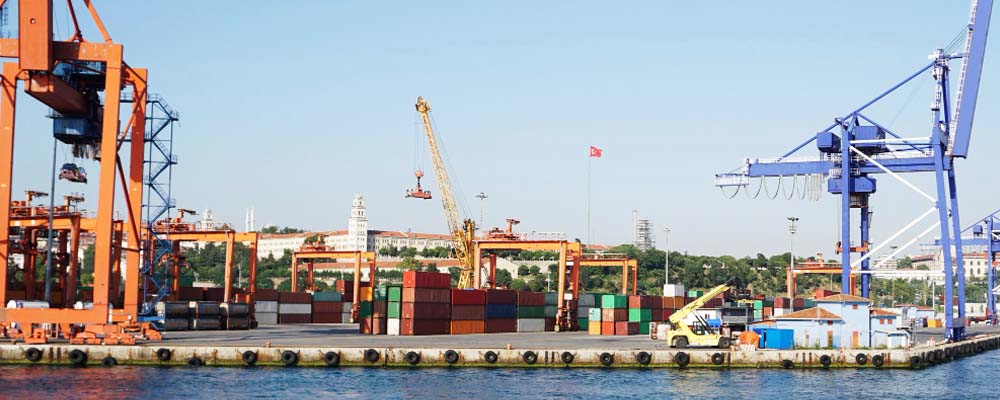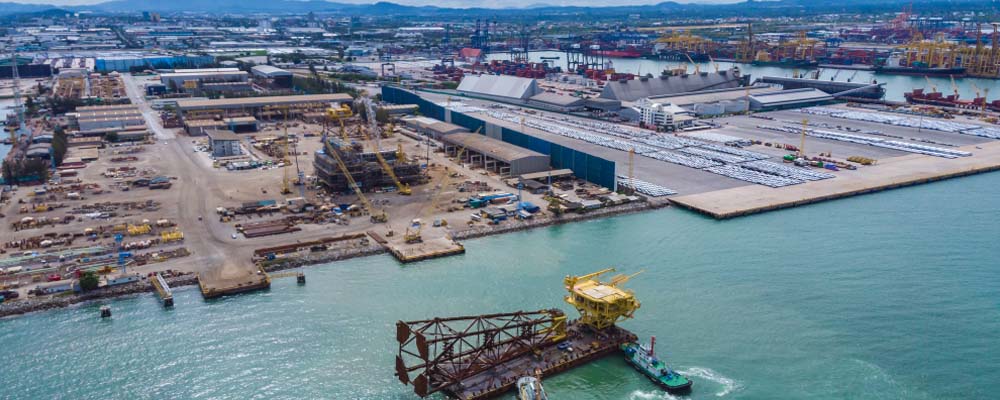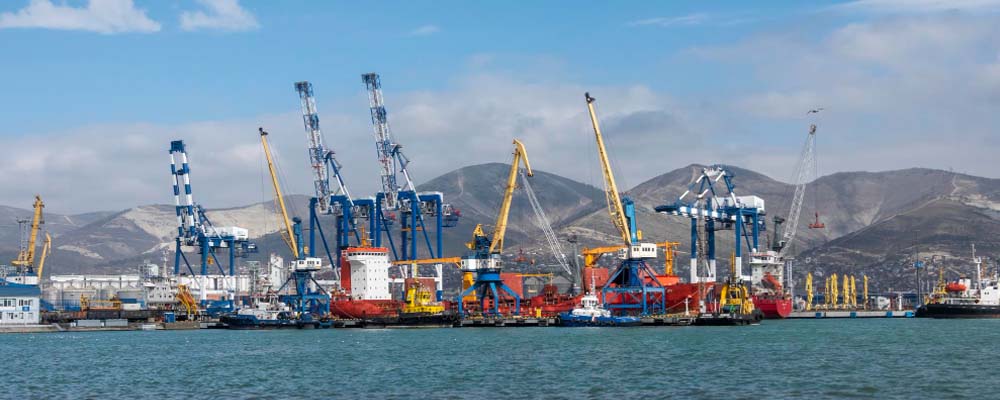 The Port of Lázaro Cárdenas, located on Mexico’s Pacific coast, is a major logistics hub for North American-Asian trade. Established in the early 20th century, it has grown from handling coal to supporting diverse cargo like containers, automobiles, and bulk goods. Its deep-water capacity, advanced infrastructure, and dedicated terminals make it a crucial alternative to congested U.S. ports. Serving industries like freight forwarding, logistics, and e-commerce, the port’s strategic location and modern facilities help optimize supply routes and reduce shipping costs across the Americas.
The Port of Lázaro Cárdenas, located on Mexico’s Pacific coast, is a major logistics hub for North American-Asian trade. Established in the early 20th century, it has grown from handling coal to supporting diverse cargo like containers, automobiles, and bulk goods. Its deep-water capacity, advanced infrastructure, and dedicated terminals make it a crucial alternative to congested U.S. ports. Serving industries like freight forwarding, logistics, and e-commerce, the port’s strategic location and modern facilities help optimize supply routes and reduce shipping costs across the Americas.
Port Infrastructure and Facilities
The Port of Lázaro Cárdenas is known for its extensive and advanced infrastructure, which allows it to accommodate diverse cargo types and substantial shipping volumes. It features deep-water terminals capable of receiving Post-Panamax and even larger vessels, making it one of the few Mexican ports with this level of capacity. This deep-water access provides a significant advantage over other ports in Mexico and Central America, as it can handle ultra-large container ships that streamline the global shipping process.
Key Infrastructure Components:
- Container Terminals: The port houses two main container terminals equipped with advanced gantry cranes and automated systems to speed up the loading and unloading processes. These terminals are operated by global logistics giants, ensuring adherence to international standards.
- Bulk Cargo Terminals: The port’s infrastructure includes specialized facilities for handling bulk commodities, including minerals, grains, and fertilizers. This versatility makes it a preferred choice for companies in the agricultural, mining, and energy sectors.
- Warehousing and Logistics Zones: The port offers extensive warehousing facilities, allowing importers and exporters to store goods temporarily. These zones are particularly beneficial for manufacturers and e-commerce businesses that need flexibility in managing inventory.
- Road and Rail Connectivity: Direct access to Mexico’s rail network and major highways enables efficient inland transportation, further enhancing the port’s position as a gateway for goods entering or exiting Mexico.
Recent Upgrades and Innovations
In response to the increasing demand for efficient logistics, the Port of Lázaro Cárdenas has undergone various upgrades in recent years. Automation and digitalization have been at the forefront of these improvements, with real-time tracking systems and digital customs processing enhancing speed and security for cargo handlers and customs brokers. These innovations are crucial for maintaining competitiveness in a rapidly evolving logistics landscape.
 Key Advantages of the Port of Lázaro Cárdenas
Key Advantages of the Port of Lázaro Cárdenas
The Port of Lázaro Cárdenas offers multiple competitive advantages that make it a preferred logistics hub for many international businesses:
- Strategic Location: Positioned along key Pacific trade routes, the port is an ideal entry point for goods coming from Asia, especially China, Japan, and South Korea. Its location makes it a viable option for reducing transit times and shipping costs to North American markets.
- Deep-Water Access: The port’s capacity to handle ultra-large container vessels gives it an edge over smaller ports. This capability reduces bottlenecks and improves efficiency for businesses transporting high-volume goods.
- Efficient Customs Operations: The port has invested in streamlining customs procedures to facilitate quick clearance. This efficiency is essential for logistics providers, customs brokers, and importers/exporters, reducing overall time-to-market and avoiding costly delays.
- Enhanced Security Protocols: Security is a top priority at the Port of Lázaro Cárdenas, with robust security measures and protocols in place to protect cargo. This is especially valuable for e-commerce businesses and other industries dealing with high-value goods.
- Advanced Digitalization: The port has implemented state-of-the-art digital systems that allow for real-time tracking and management of shipments. This transparency is a game-changer for logistics companies and customs brokers who rely on accurate and timely data to manage their operations.
Main Trade Routes and Global Connectivity
The Port of Lázaro Cárdenas is strategically positioned to connect key markets across the globe. Its trade routes primarily link North America with Asian countries, which are among Mexico’s most significant trading partners. Regular shipping routes connect the port with major Asian hubs, such as Shanghai, Tokyo, and Busan, facilitating the efficient movement of goods across the Pacific.
Additionally, the port’s connectivity extends to Latin America and Europe, making it a flexible option for businesses involved in intercontinental trade. For manufacturers, this connectivity offers easy access to raw materials and the ability to reach a wide range of markets, enhancing their competitiveness in a globalized economy. Importers and exporters can also leverage this connectivity to optimize shipping routes, reduce transit times, and streamline supply chains.
Economic Impact and Role in Mexico’s Supply Chain
The Port of Lázaro Cárdenas contributes significantly to Mexico’s economy by supporting trade, creating jobs, and fostering regional development. As an alternative to congested U.S. ports, it plays a critical role in managing the supply chain demands of North America, especially during peak seasons or times of disruption in the United States.
The port’s capacity for handling large volumes of cargo has a positive ripple effect on various sectors, from agriculture and manufacturing to technology and e-commerce. Logistics providers and customs brokers working with high-volume imports, like automotive parts or consumer electronics, benefit from the port’s robust infrastructure and streamlined processes, helping to boost efficiency and minimize costs.
Challenges and Future Opportunities
While the Port of Lázaro Cárdenas has become a key player in Mexico’s logistics landscape, it faces some challenges. Increased competition from other regional ports, environmental regulations, and the need for continuous upgrades to meet growing demand can strain resources. The port must navigate these challenges to remain competitive, especially as global trade becomes increasingly complex.
Future Development Plans
To maintain its competitive edge, the Port of Lázaro Cárdenas has outlined several development plans. These include infrastructure expansions to handle higher cargo volumes, investments in sustainable practices, and a focus on technological advancements to further digitalize the port’s operations. These initiatives position the port to play an even larger role in the logistics sector, making it an attractive option for e-commerce companies, importers, and logistics providers looking for efficient and reliable shipping solutions.
 Conclusion
Conclusion
The Port of Lázaro Cárdenas is more than just a maritime gateway; it’s a strategic asset for businesses in Mexico and across North America. From its deep-water access and extensive infrastructure to its efficient customs and digital systems, the port stands out as a powerful option for streamlining supply chains. Freight forwarding companies, logistics providers, manufacturers, and e-commerce businesses can all leverage the unique advantages of this port to optimize their logistics operations, cut down on transit times, and gain a competitive edge in a fast-paced global market.
By understanding the full potential of the Port of Lázaro Cárdenas, industry players can make informed decisions that enhance their operations and drive growth in an increasingly interconnected world.




 Key Advantages of the Port of Lázaro Cárdenas
Key Advantages of the Port of Lázaro Cárdenas Conclusion
Conclusion



